independent brain bins for the classroom
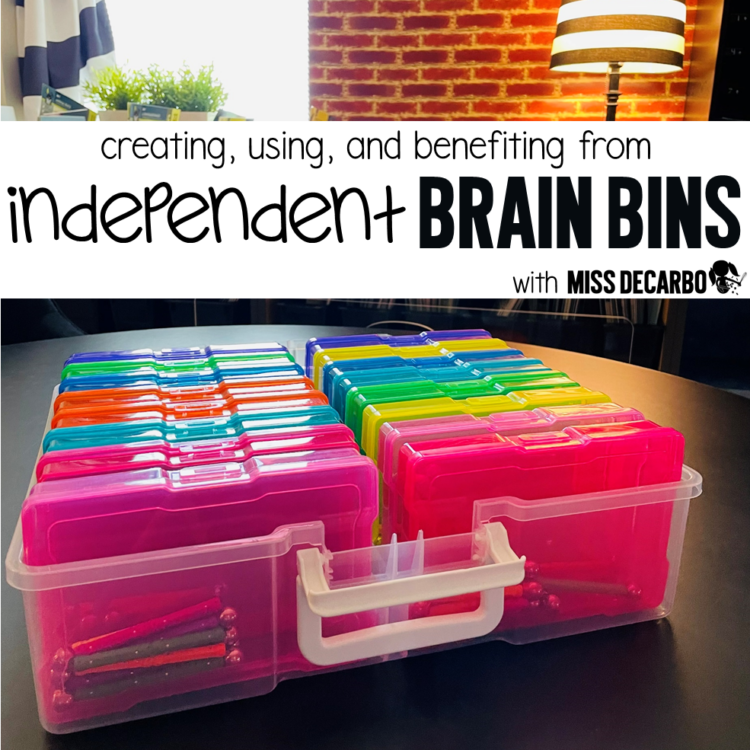
What are independent brain bins? Brain bins are what I like to call morning tubs! These little bins are filled with STEM materials and toys that my students use during our morning routine. These bins contain play-based STEM materials that promote creativity, critical thinking, and problem solving skills. Students use brain bins during the first 10-15 minutes of their school day. They provide an engaging way for students to wake up and feel successful and confident in their first classroom activity! To put it simply, this open-ended way of starting our day together has been a game-changer for my students and myself! Typically, brain bins have consisted of tubs of materials that students would use to play with, create with, and collaborate on together. (You can read ALL about the research and benefits of brain bins in my original brain bin post found HERE.)
However, due to changes in our school policies once the pandemic hit, students are now unable to share materials and resources at this time. Nevertheless, brain bins were not something I was willing to give up as part of our classroom routine! I set off to find a way that would enable my students to still participate in the benefits of brain bins. The result? Independent, individual brain bins that students grab each morning and start playing with! In this post, I’ll share the benefits of these individual and independent brain bins, as well as some management tips and ideas for what to put inside of them!
Benefits of independent brain bins
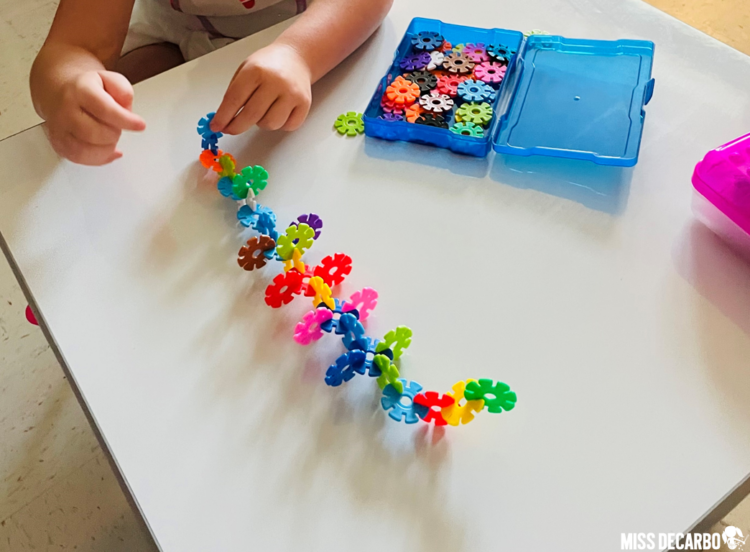
If you’ve read my original Brain Bins Blog Post, you know how critical the social and collaboration piece is to me when it comes to the benefits of morning tubs. By implementing individual brain bins, I was initially really worried that the core benefit would disappear. Surprisingly, the social and collaborative piece is still HIGHLY present when students use independent brain bins!
Although students are not talking and sharing materials at the same table, they are STILL actively sharing and collaborating from their socially distanced desks. It’s not uncommon to hear comments in the morning such as, “Check out what ___ made!” and “Look what I just found out! If you put a piece on the bottom right here, you can make your tower higher!” Individual brian bins still provide the same amount of creativity, problem-solving experiences, open-ended play time, and socialization as brain bins that are used at a shared table.
There have been other benefits to individual brain bins, too. Our room is quieter and calmer than ever before because conflicts over who has more pieces or who is hogging certain materials has completely disappeared. My students come in and quietly grab their brain bin and get started playing.
(The remaining part of this blog post includes some Amazon Affiliate links for your convenience, so that you can find and reference the materials and supplies I refer to easily and quickly. This just means that my blog receives a tiny compensation if you click on these links- at absolutely no extra charge to you!)
individual storage ideas
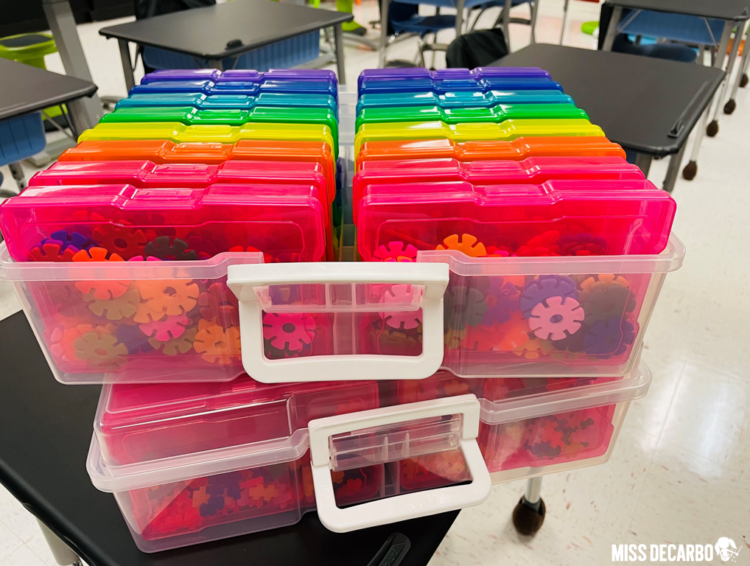
If you’re ready to move into using Independent Brain Bins for your morning routine, the first thing you’ll want to do is decide how to store the materials. I really LOVE the photo boxes found HERE. They are small, compact, and fit perfectly into my students desks and even seat sacks. The small size helps me so that I don’t feel the need to fill them with TOO MANY supplies or toys, which saves me money and time. The best part of these bins is that they conveniently fit into the carrying case they come in. They are super easy to stack and store in my cupboards when not in use.
If you choose not to use to use the 4″ x 6″ photo boxes that I use, the following ideas will work, too!
- Zip Lock Baggies
- Pencil Boxes
- mesh zipper pouches
- Tissue boxes or shoeboxes
management tips for teachers
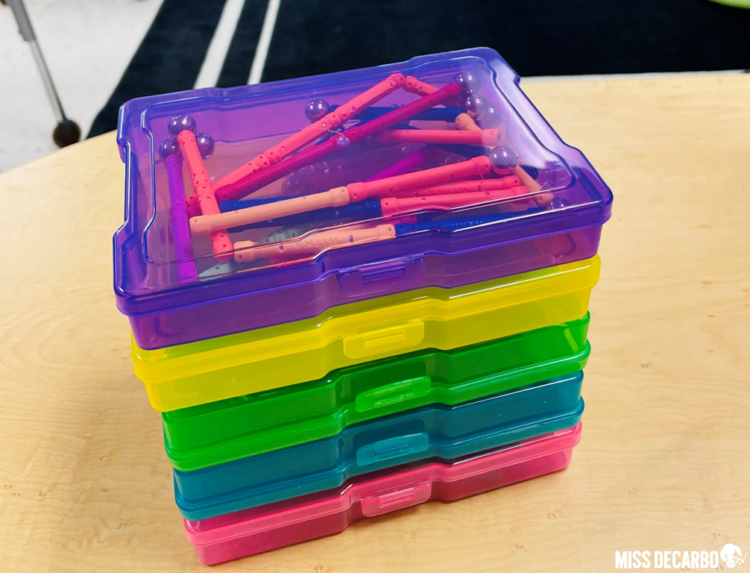
Below are some frequently asked questions about my independent brain bins. I hope this helps you with management, organization, and routines!
“Do you put in a list of things for students to create?” The answer is simply, “Absolutely not!” Brain bin and morning tub time should be completely open-ended. We are ALWAYS giving our students tasks to accomplish and things to do. The truth is, students need more unrestricted time for their creativity. In my classroom, building and playing with brain bin toys is ALWAYS open-ended and free from task cards, idea lists, or to-do lists. For some students, it’s hard to think of “what to do” or “what to build.” But guess what? That feeling is GOOD for them! Students will not be pushed in their creativity and problem-solving skills if we are always telling them what to make or how to make something.
“How long do you leave a certain material in the brain bins? How often do you switch them out?” I switch out our brain bin materials every two weeks. There is no right or wrong answer to this. You can do whatever is most convenient for you. I find that two weeks of using the same materials gives students ample time to explore the toys. If they are using a different toy each day, they don’t really get a lot of time to expand on the different ways they can put the pieces together. It’s also is less work for me, which is always a plus!
“Do students use the same bin each day or do they grab whichever bin they want?” My students use their same bin every day for two weeks. This eliminates me needing to sanitize the toys EVERY day. I’ve found that my students naturally like this because they can save some of their creations to work on the next day, or simply try a new idea with the same materials they used the previous day.
“How long do students use their independent brain bins for?” After my students move their lunch choice and finish their morning routine tasks, they grab a brain bin and start playing. This time lasts for about 15-20 minutes this year. This is because as part of our daily routine, we go to specials (music, gym, art, technology, STEM class) first thing in the morning. In previous years, brain bin time has been anywhere from 10-12 minutes. If you don’t have time to do this during the morning, consider using brain bins as Fast Finisher activities or during dismissal time after your students complete the Digital Daily Dendrite Challenge for the day! (This is a quick brain-building challenge that my students work on at the very end of the day. It’s also great for your class meeting time! You can learn more about this additional brain-building activity HERE.)
“How do you clean or sanitize your brain bins in between student use?” All of the materials in our brain bins are plastic, with the exception of the playdough. A quick cleaning spray to the bins will disinfect them in between student use.
“What toys do you put into the brain bins?” GREAT question! Keep reading for a list of what I’ve used this year, as well as convenient links to everything I have implemented in my classroom!
Ideas for Independent Brain Bins
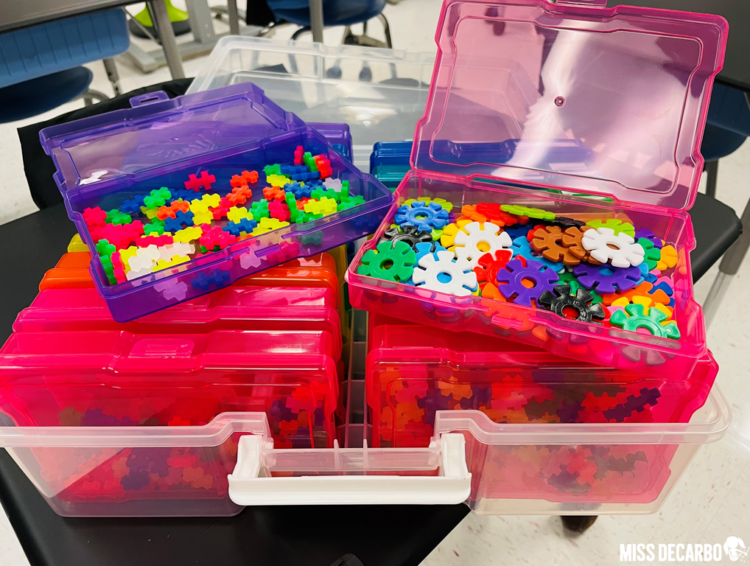
You can find A LOT of ideas for brain bins in my original brain bin post, found here. However, not all materials will fit into these convenient photo boxes for independent brain bins. I currently have a total of FIVE classroom sets of bins for classroom. Students all use the SAME material for two weeks at a time. As a result, it takes us at least 10 weeks to rotate through all five of our different brain bins. After ten to twelve weeks, students are SUPER EXCITED to rotate through all of the bins again! This has saved me money, time, and my sanity!
Click on each picture below to check out the STEM toys I used to fill up our bins. Keep in mind that the AMOUNT of materials you need will depend on how many students you have, and how much you want to fill the bins up. I find that a couple handfuls is PLENTY. For example, two bags of the brain flakes was enough for my class of 16 students this year. (Yes! I know that is NOT A LOT OF KIDS haha! This year is an exception because our numbers were kept low due to the pandemic and social distancing. Please do not throw Legos at me haha! I normally have an average of 20 to upwards of 28 students.)
Final Thoughts: Have fun!
I hope you LOVED learning about our independent brain bins! It has completely changed the attitude, energy, and sanity of my classroom. Students arrive to school happy and excited to have some play time as they settle into a day of learning. On my end, I am no longer copying worksheets that are too easy for some students and too hard for others. You can read more about the research to support your decision for brain bins in this blog post. I hope you and your students have fun implementing these independent morning tubs!
If you want to share to share this post with a colleague, or refer back to it, feel free to PIN the image below! You can also find more daily ideas, resources, tips, and freebies by following me on Instagram @missdecarbo!


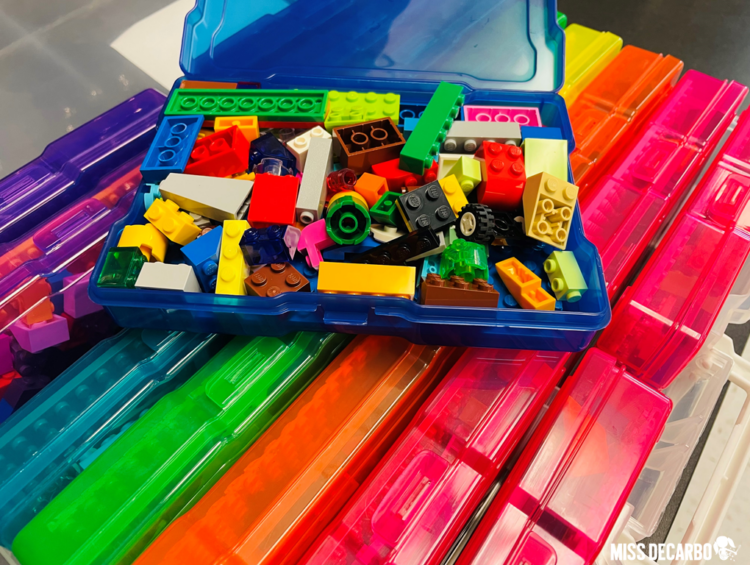
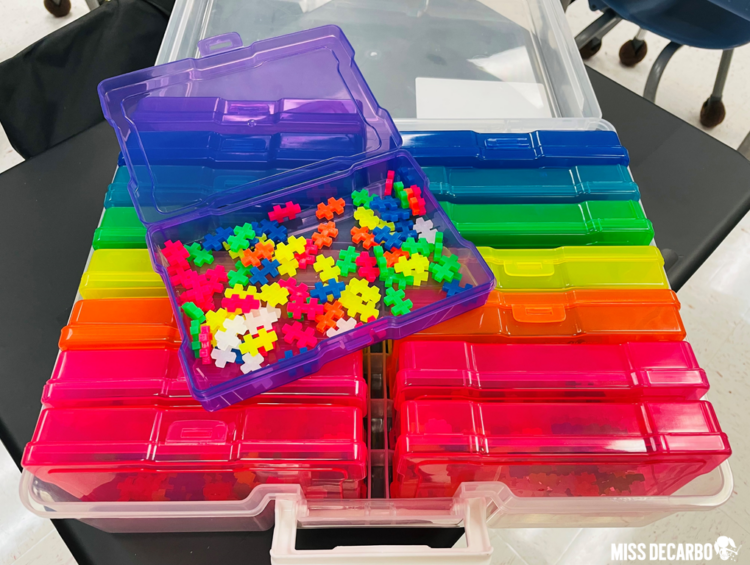
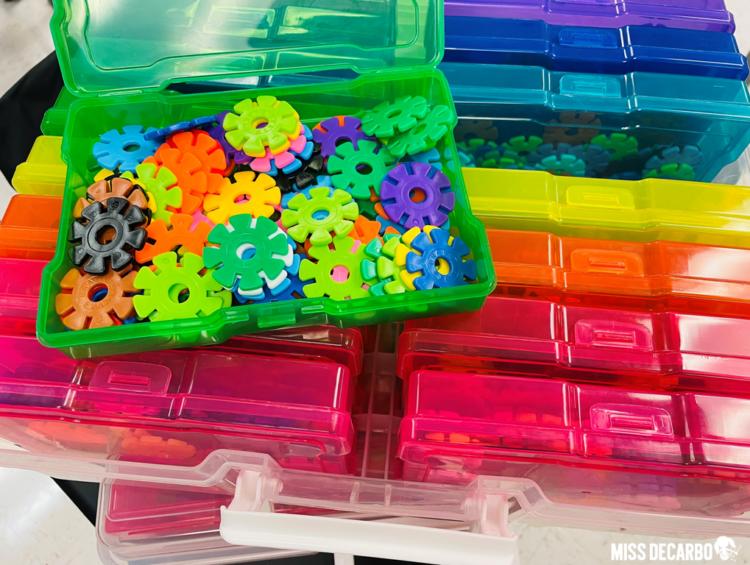
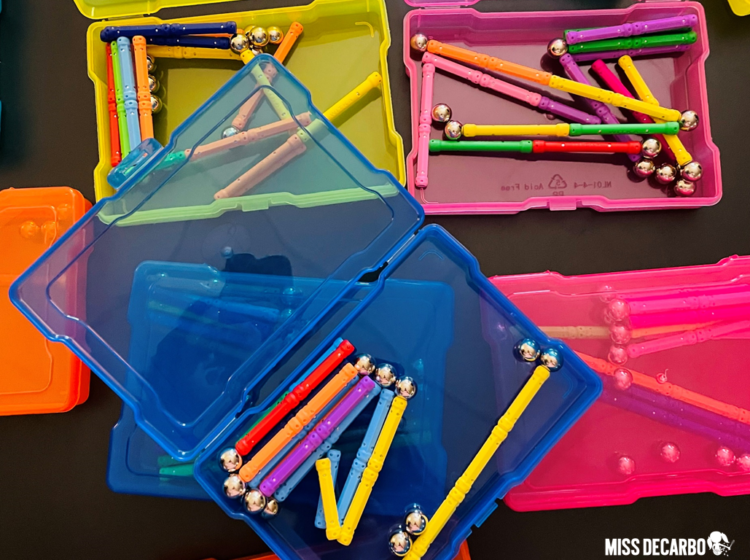
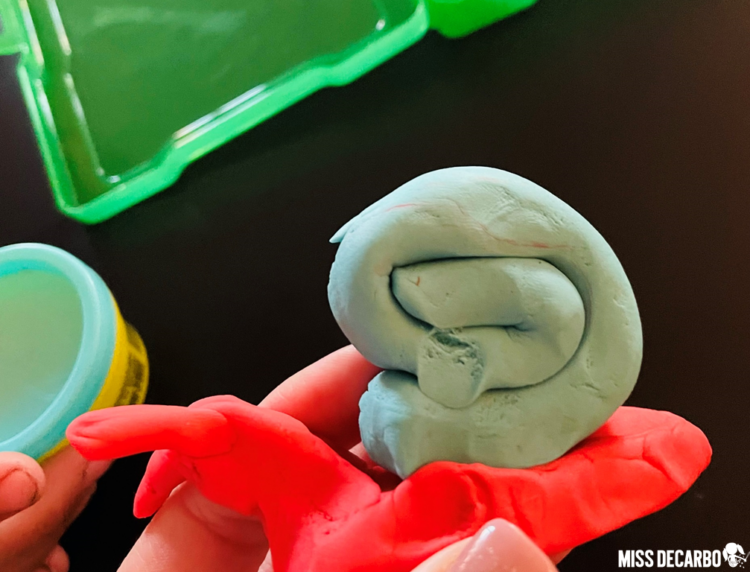
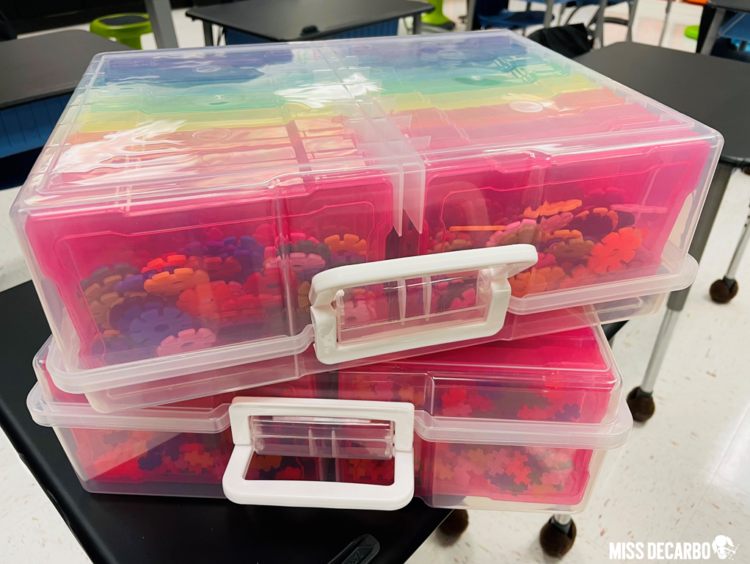
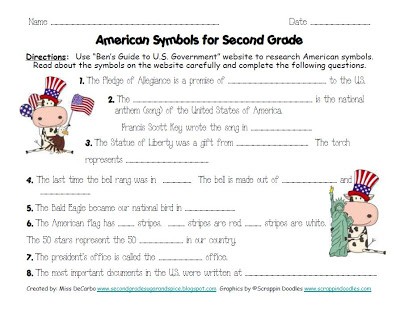
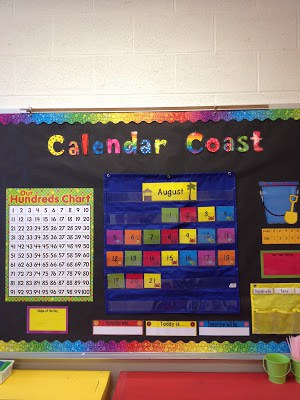
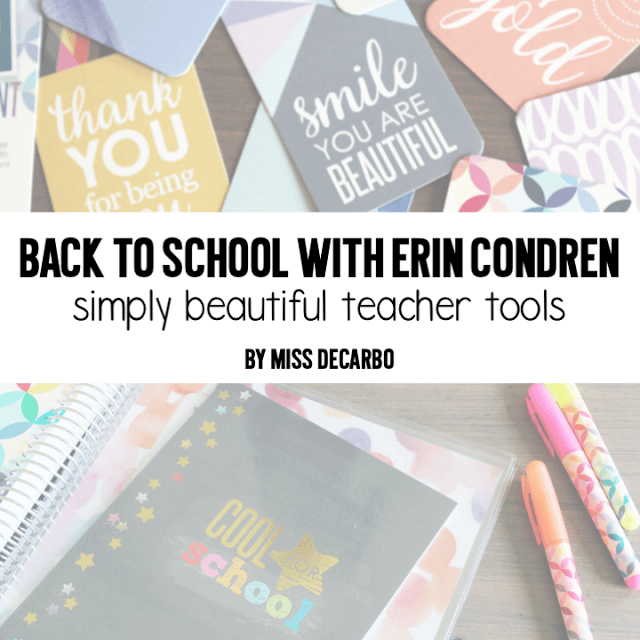
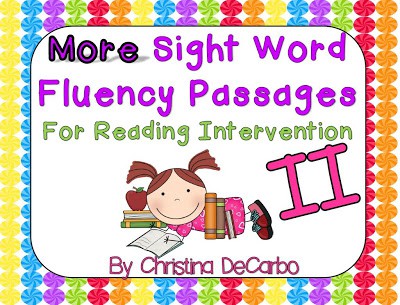
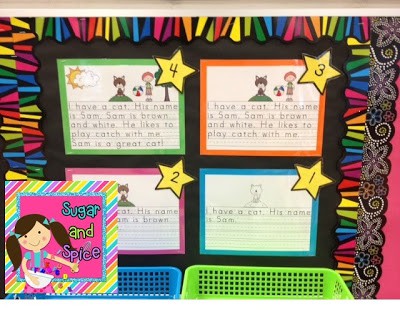
With no COVID restrictions would you go back to bins or keep the individual brain tubs?
Great question! Having done it both ways now, I would start with individual brain bins and then move to group bins later. It would give us time to build community and discuss/practice what it means and looks like to share, collaborate, etc. 🙂 Hope that helps! 🙂